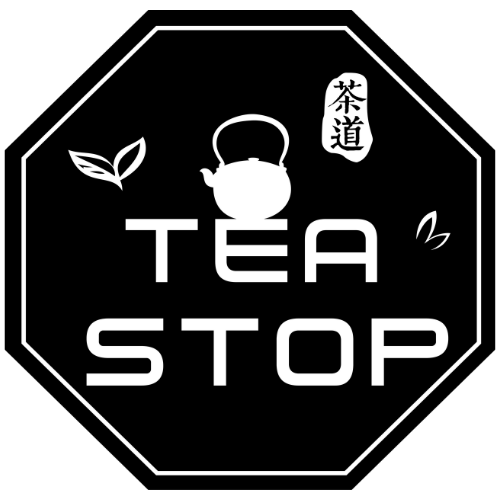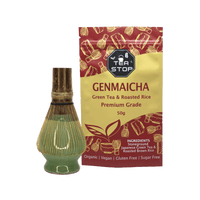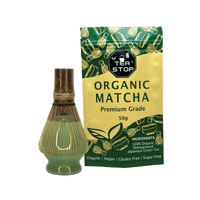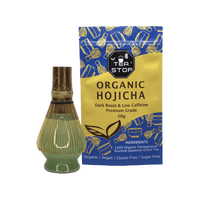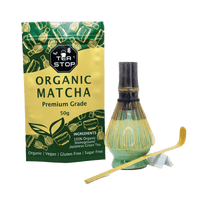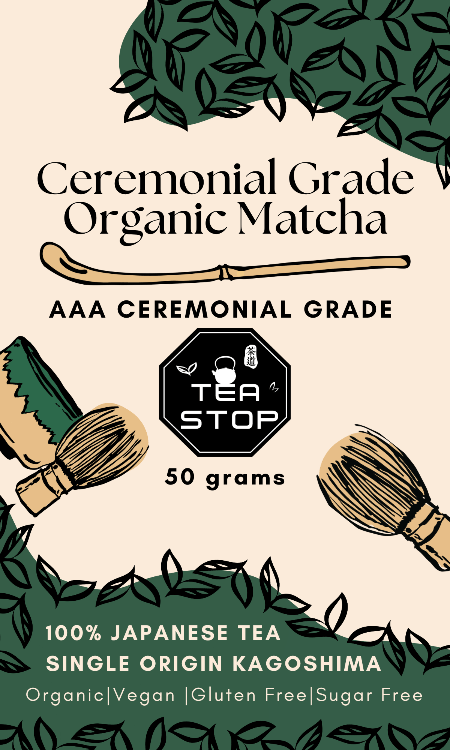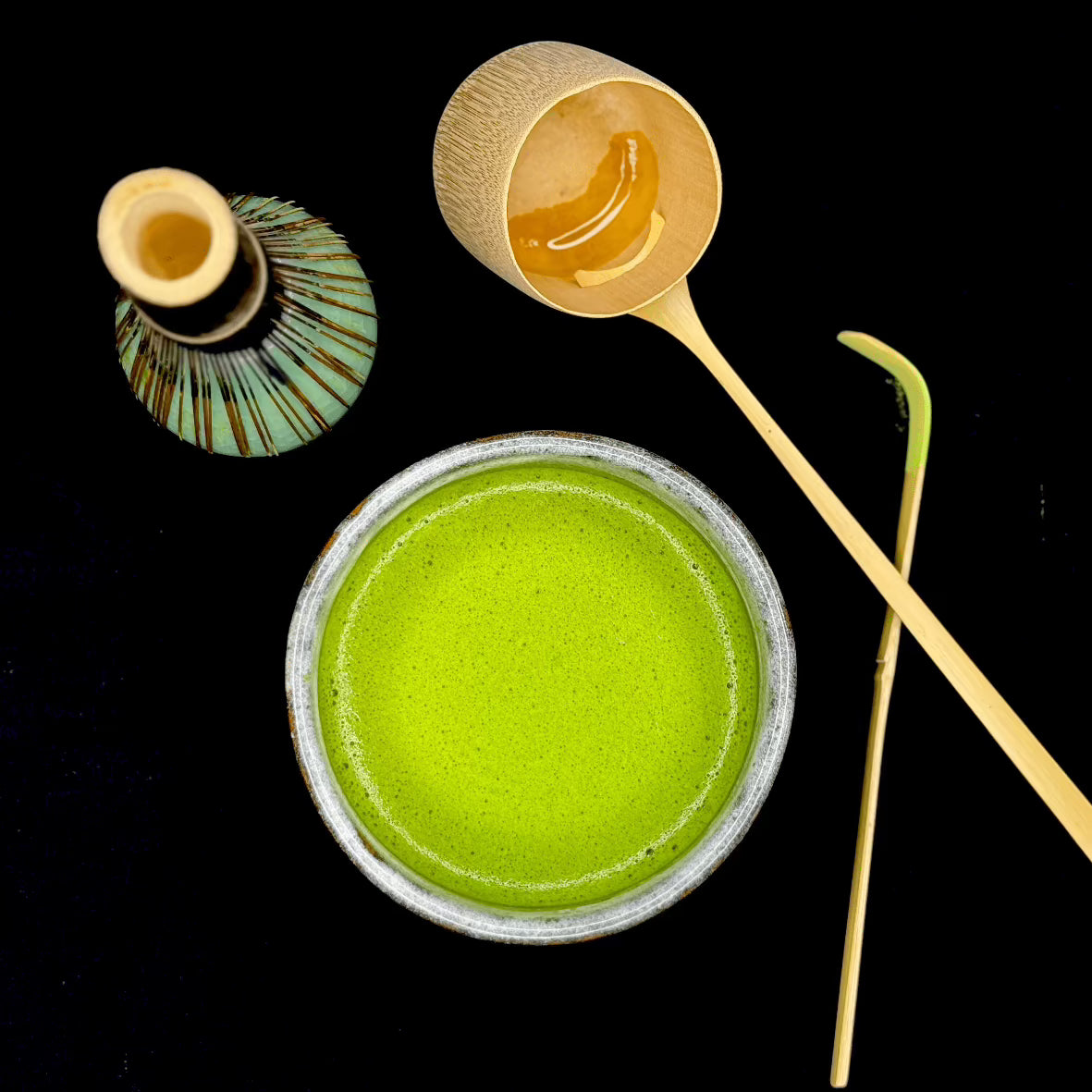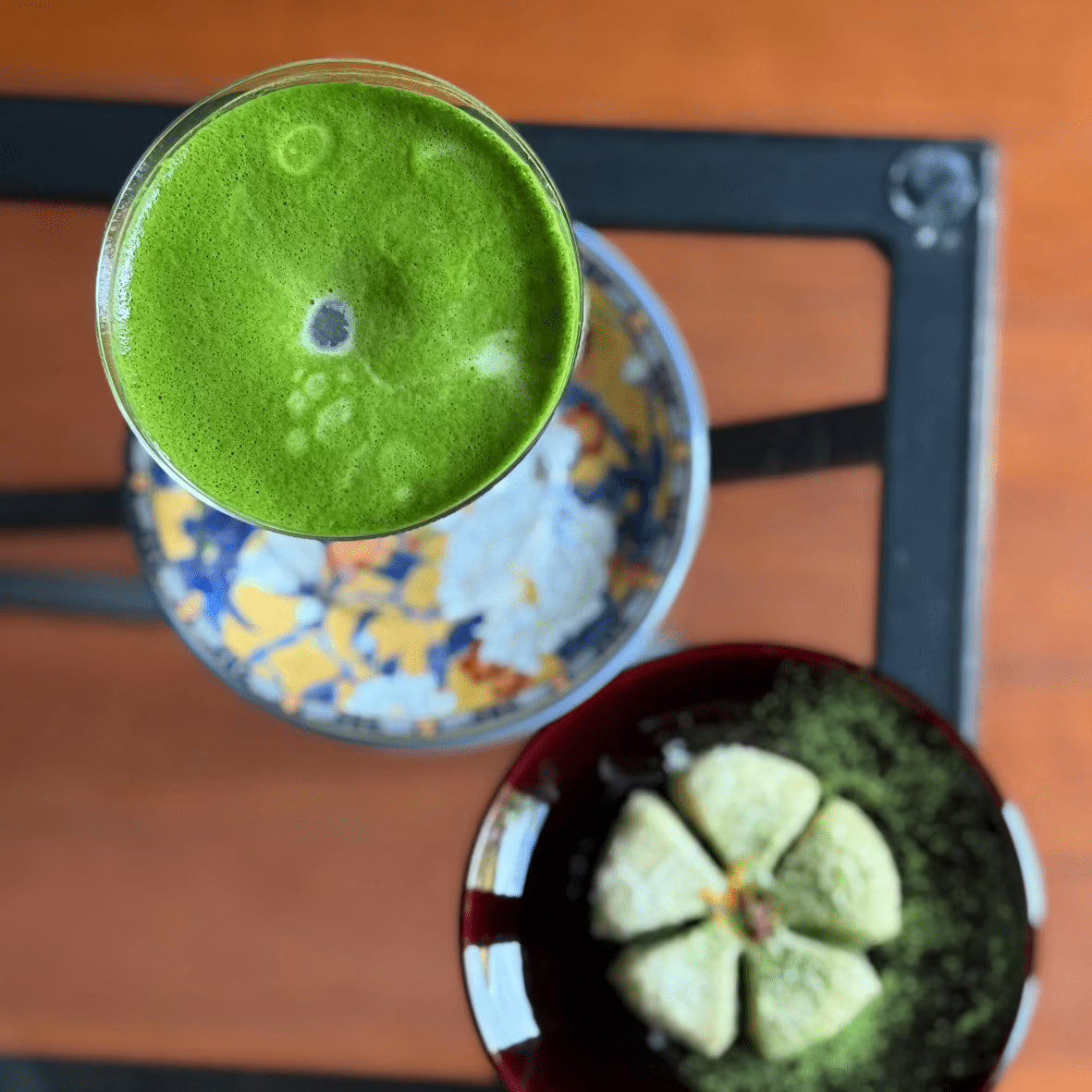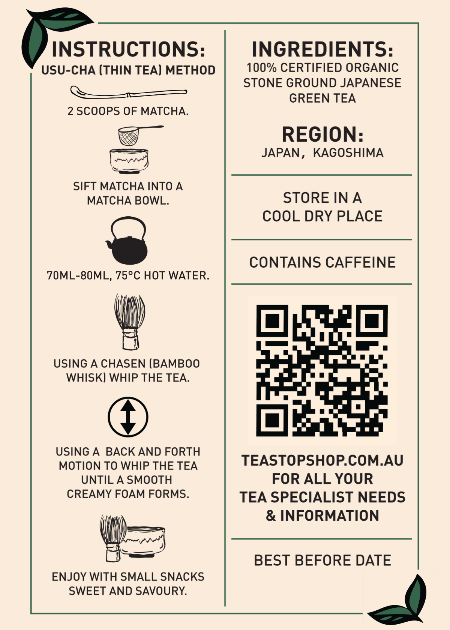
How to Make Perfect Matcha Tea at Home: Your Complete Step-by-Step Guide
Share
Making matcha tea at home doesn't have to be intimidating, even if you've never whisked a single bowl before. While traditional Japanese tea ceremonies can take years to master, creating a delicious, frothy cup of matcha in your own kitchen takes just 2-3 minutes once you know the proper technique. Whether you're tired of paying $8 for a matcha latte at cafes or simply want to experience the meditative ritual of preparing this ancient beverage yourself, this comprehensive guide will transform you from a complete beginner into a confident home matcha maker. We'll cover everything from selecting the right tools to troubleshooting common problems, ensuring your matcha tastes as good as (or better than) what you'd find in high-end tea shops.

Essential Tools and Ingredients for Making Matcha Tea
Before you begin your matcha journey, having the right tools makes all the difference between a smooth, frothy success and a lumpy, bitter disappointment. While you can make matcha with improvised tools, investing in proper equipment enhances both the experience and the final result.
The Must-Have Essentials:
- Matcha Powder: Start with ceremonial or premium grade for drinking
- Bamboo Whisk (Chasen): 80-100 prongs create the perfect froth
- Matcha Bowl (Chawan): Wide shape allows proper whisking motion
- Fine-Mesh Sifter: Prevents clumps for smooth consistency
- Bamboo Scoop (Chashaku) or measuring spoon: For consistent dosing
Shop our complete matcha starter sets that include everything you need to begin. While traditional tools enhance the experience, you can start with a small bowl and a milk frother if needed – the key is beginning your practice rather than waiting for perfect conditions.
Water Quality Matters: Use filtered or spring water for the best taste. Hard water can make matcha taste flat, while distilled water lacks the minerals that bring out matcha's umami notes. The ideal water temperature is 70-80°C (160-175°F) – any hotter and you'll destroy beneficial compounds while creating bitterness.
Traditional Method: Making Usucha (Thin Matcha Tea)
Step 1: Warm Your Bowl Pour hot water into your matcha bowl, swirl it around, then discard. This warms the bowl and prevents the matcha from cooling too quickly. Dry the bowl with a clean cloth.
Step 2: Sift Your Matcha Place 1-2 bamboo scoops (about 2 grams or ½ teaspoon) of matcha into your sifter over the bowl. Gently tap or use the back of the scoop to sift the powder through. This crucial step prevents clumps and ensures a smooth texture.
Step 3: Add Water Pour 60-70ml (about ¼ cup) of 70-80°C water into the bowl. The amount of water determines the strength – less water creates a more intense flavor.
Step 4: Whisk with Purpose Hold the bamboo whisk vertically and briefly stir to wet all the powder. Then, using your wrist (not your whole arm), whisk vigorously in a W or M motion for 15-20 seconds. The whisk should barely touch the bottom of the bowl. You're looking for a layer of fine, creamy foam on top.
Step 5: Final Touch Slow your whisking and gently break any large bubbles on the surface. Lift the whisk slowly from the center to create a smooth foam peak.
Modern Methods: Alternative Ways to Make Matcha
Electric Frother Method Perfect for busy mornings when tradition takes a backseat to convenience. Add sifted matcha to a mug, pour in a small amount of water to create a paste, then use an electric milk frother for 30-45 seconds until frothy. Browse our modern matcha tools
Shaker Bottle Method Ideal for matcha on-the-go. Add matcha and cold water to a shaker bottle with a mixing ball. Shake vigorously for 30 seconds. While you won't get the traditional foam, this method works excellently for iced matcha or pre-workout drinks.
Blender Method For matcha lattes and smoothies, a blender creates perfectly smooth results. Blend matcha with your liquid of choice for 10-15 seconds. This method works especially well when making multiple servings.
How to Make Popular Matcha Variations
Classic Matcha Latte
- Prepare matcha tea using 3 grams of powder with 60ml water
- Heat 200ml of milk (dairy or plant-based) to 60°C
- Froth the milk until creamy
- Pour milk over prepared matcha, creating latte art if desired
- Sweeten with honey or maple syrup if preferred
Iced Matcha
- Use 3 grams of matcha with 30ml room temperature water
- Whisk until smooth
- Fill glass with ice
- Add 200ml cold water or milk
- Stir well and enjoy immediately
Matcha Smoothie Base
- Add 2 grams matcha to blender
- Include 1 banana, ½ cup spinach, 1 cup almond milk
- Blend until completely smooth
- Add ice for a colder drink
Find more creative matcha recipes

Water Temperature: The Key to Perfect Matcha
|
Water Temperature |
Result |
Best For |
|
60-65°C (140-150°F) |
Very sweet, minimal bitterness |
Beginners, sweet tooth |
|
70-75°C (160-165°F) |
Balanced sweetness and umami |
Daily drinking |
|
75-80°C (165-175°F) |
Full flavor, slight astringency |
Experienced drinkers |
|
Above 80°C (175°F) |
Bitter, destroyed nutrients |
Never recommended |
The single biggest mistake people make is using boiling water. If you don't have a thermometer, let boiling water sit for 5-7 minutes before using, or mix ⅓ cold water with ⅔ boiling water for the right temperature.
Troubleshooting Common Matcha Problems
Problem: Clumpy, Grainy Texture
- Cause: Not sifting the matcha or insufficient whisking
- Solution: Always sift first, whisk more vigorously, consider adding a tiny bit of water to make a paste first
Problem: Bitter Taste
- Cause: Water too hot, low-quality matcha, or too much powder
- Solution: Check water temperature, use ceremonial grade, reduce to 1.5 grams per serving
Problem: No Foam Formation
- Cause: Wrong whisking technique or old matcha
- Solution: Use rapid wrist movements in W motion, ensure matcha is fresh (within 6 months of opening)
Problem: Matcha Settles Quickly
- Cause: Not enough whisking or water too cold
- Solution: Whisk for full 20 seconds, ensure water is at least 70°C
The Perfect Matcha Ratio Formula
Understanding ratios helps you customize your matcha to personal preference:
- Traditional Usucha: 2g matcha : 70ml water
- Strong Usucha: 3g matcha : 70ml water
- Koicha (Thick Tea): 4g matcha : 30ml water
- Western Style: 1g matcha : 150ml water
- Latte Base: 3g matcha : 60ml water (then add milk)
Start with traditional usucha and adjust based on your taste preferences. Some prefer a stronger, more intense flavor, while others enjoy a lighter, more delicate brew.
Tips from Japanese Tea Masters
The Meditation of Preparation Japanese tea masters emphasize that making matcha is as much about the journey as the destination. Take three deep breaths before beginning. Focus on each movement. This mindfulness enhances both the preparation experience and the tea's perceived taste.
The Temperature Test Traditional tea makers test water temperature by holding the bowl – if you can hold it comfortably for 5 seconds, it's the right temperature for matcha.
The Sound of Success Listen for a gentle "sha-sha-sha" sound while whisking – this indicates the correct speed and pressure for creating optimal foam.

Why Proper Technique Matters
Making matcha correctly isn't just about tradition – it directly impacts the health benefits and taste experience. Proper whisking breaks down the powder particles, releasing more antioxidants and creating better bioavailability. The foam layer protects volatile aromatic compounds, delivering the full sensory experience matcha offers.
Temperature control preserves heat-sensitive compounds like EGCG and L-theanine. Studies show that matcha prepared at the correct temperature contains 20% more available antioxidants than matcha made with boiling water. Discover the science behind matcha preparation
Frequently Asked Questions About Making Matcha Tea
Can I make matcha without a bamboo whisk?
Yes! Use an electric frother, regular whisk with vigorous motion, or even a mason jar with a tight lid. While bamboo whisks create the best texture, any method that incorporates air will work.
How do I know if my matcha has gone bad?
Fresh matcha is vibrant green with a sweet, grassy aroma. If it's yellowish-brown or smells stale, it's past its prime. Store in an airtight container in the refrigerator for maximum freshness.
Why does my matcha taste different each time I make it?
Consistency comes with practice. Use a scale for precise measurements, thermometer for water temperature, and timer for whisking duration until you develop muscle memory.
Should I add sweetener to matcha?
Traditional matcha is enjoyed without sweetener to appreciate its natural umami. However, adding honey, maple syrup, or vanilla can help beginners transition from sweeter drinks.
Can I pre-make matcha for later?
Matcha is best enjoyed immediately after preparation. The foam dissipates and beneficial compounds degrade within 15-30 minutes. For convenience, pre-measure portions but always whisk fresh.
Master Your Matcha Journey Today
You now have all the knowledge needed to make perfect matcha tea at home, from traditional ceremonial preparation to modern convenient methods. Remember, making great matcha is a skill that improves with practice. Don't be discouraged if your first attempts aren't perfect – even tea masters spend years refining their technique.
Start with quality matcha, use the right water temperature, and practice your whisking technique. Soon, you'll be creating cafe-quality matcha drinks in your own kitchen, saving money while enjoying a meditative daily ritual that benefits both body and mind.
Begin your matcha journey with our beginner-friendly starter kit – includes premium matcha, traditional tools, and detailed instructions to ensure your success from day one.
